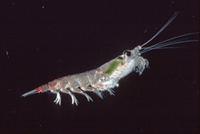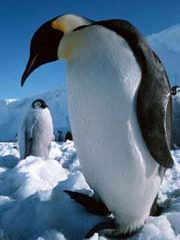Ecology, The Environment and Conservation
This complex theme deals primarily with interactions between organisms and the environmental factors that impact them, but to a greater extent between individual inanimate environmental factors.
innovations-report offers informative reports and articles on topics such as climate protection, landscape conservation, ecological systems, wildlife and nature parks and ecosystem efficiency and balance.

Converting waste vegetable oil into a useful energy source
A researcher in environmental engineering at Staffordshire University has developed a technique to convert unwanted cooking oil into a ‘biodiesel’ which is a much cleaner alternative to fossil diesel.
Dr Tarik Al-Shemmeri, a Reader in Environmental Engineering at Staffordshire University, uses discarded vegetable oil as the basis of his sustainable fuel which, when burnt, DOES NOT
give off sulphur dioxide, unlike conventional diesel.
Sulphur dioxide contributes to what has bee

California’s native grasses can be restored
A research project to restore native grasslands to a reserve in California has yielded some promising results. The native grasslands may only need to be reseeded with native seeds without having to first eradicate the invading plants from Europe, according to a presentation at the recent annual Ecological Society of America meeting by researchers from the University of California, Santa Barbara and the University of Minnesota.
The research team included Eric Seabloom, of the National Center

Biodegradable reinforced plastics could replace landfills with compost heaps, Cornell fiber scientist believes
Instead of landfills clogged with computer and car parts, packaging and a myriad of other plastic parts, a Cornell University fiber scientist has a better idea. In coming years, he says, many of these discarded items will be composted.
The key to this “green” solution, says researcher Anil Netravali, is fully biodegradable composites made from soybean protein and other biodegradable plastics and plant-based fibers, developed at Cornell and elsewhere.
“These new fully biodegradable

AAAS at the BA: Whale food, winners and losers in Antarctica and solar insights
Climate clues from the Earth’s poles – swarming whale food, winners and losers in Antarctic waters, and solar insights at the BA 2002 Annual Meeting
The latest thinking on the chances of extinction for Antarctic animals in seas and lakes, whale food hiding beneath sea ice, and new insights on the Sun’s spin are among the hot topics slated for discussion at today’s Frontiers of Polar Science panel, organized by the American Association for the Advancement of Science (AAAS), through i

Antarctic seabirds and climate change
Recent changes in Antarctic seabird populations may be linked to environmental change according to scientists reporting in the journal Science this week. Researchers from the Cambridge-based British Antarctic Survey (BAS) reviewed the best available data from a range of long-term studies to test the view that warming of the Earth`s climate is affecting Antarctic marine life. Whilst they found that sea-ice has a profound influence on population levels of snow petrels, Adélie and emperor penguins, the

MIT team probes arsenic and old lakes
MIT researchers have shown that a common pollutant strongly impacts the behavior of arsenic and possibly other toxic metals in some lakes, adding to scientists’ understanding of how such elements move through the water.
“The work shows that nitrate pollution, which arises from sources such as automobile exhaust, wastewater disposal and fertilizers, is more important in lake dynamics than had been thought,” said Harry Hemond, the Leonhard Professor of Civil and Environmental Engineering